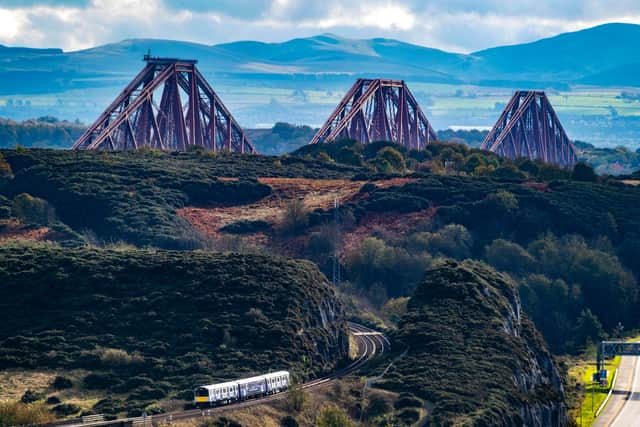Battery and hydrogen trains for ScotRail ‘could make Scotland a global leader’ in zero-emission transport
One manufacturer has told Scotland on Sunday that it could even see Britain’s first major battery-powered fleet operating north of the Border, which would halve the cost of electrifying lines.
Routes expected to be among the first benefit include the Borders Railway between Edinburgh and Tweedbank, the Fife Circle and Glasgow-East Kilbride.
Advertisement
Hide AdAdvertisement
Hide AdIndustry leaders are impressed with the Scottish Government’s progress towards its target of phasing out all ScotRail’s diesel trains by 2035.


This is likely to accelerate when ministers take control of ScotRail in three weeks, with transport minister Jenny Gilruth already signalling that its refurbished 40-year-old Inter7City trains might be withdrawn earlier than 2030 as planned because of deficiencies highlighted after one was involved in the fatal crash in Aberdeenshire.
Some 40 per cent of the Scottish network is electrified, which accounts for three in four journeys, but it is largely in the Central Belt and stretches only as far north as Dunblane.
While many manufacturers are developing battery trains, Vivarail demonstrated the technology in Scotland during last year’s COP26 climate change summit with a prototype converted London Underground train.
Spanish train manufacturer Talgo hopes to win an order which would enable it to open a factory at the former Longannet power station site in Fife.
UK managing director Jon Veitch said: “We are really excited about the future procurements of trains for Scotland, for which I believe we have the right blend of high-quality trains using alternative and proven propulsion technologies.
"We are about to start running our TPH2 hydrogen and electric train with a range of 500km (311 miles) in Spain, which would be perfect for the Far North routes [Inverness-Wick/Thurso].
"It will also cement a vibrant future at Longannet.”
Another multinational manufacturer said: "The procurement will be pretty significant – and it’s going to be super competitive because of the lack of new orders down south.
Advertisement
Hide AdAdvertisement
Hide Ad“The first proper battery train would put Scotland as a global leader as well as one of the front runners in new train technology in the UK.
"Transport Scotland is much more switched on than the UK Government to battery trains as meaning the whole of a route does not need to be electrified.”
The firm described the Borders Railway as an “ideal candidate” to lead the way since studies showed battery trains would cut the cost of electrifying and running the line by more than half.
Trains could run on batteries over half the 35-mile route, which could be recharged over the electrified sections.
Robert Samson, of passenger watchdog Transport Focus, said travellers must be included in designing such new trains.
He said they should offer flexibility to match changing requirements, such as the ability to easily replace some seats with more luggage space if leisure travel continued to grow at the expense of commuting.
A Transport Scotland spokesperson said: “We are currently exploring a range of options with regards to introducing emission-free rolling stock for Scotland’s Railway as part of our ambitious Decarbonisation Action Plan, which will decarbonise passenger services by 2035.
"These include conventional route electrification, hydrogen and battery-powered trains.”
A message from the Editor:
Thank you for reading this article. We're more reliant on your support than ever as the shift in consumer habits brought about by coronavirus impacts our advertisers.
If you haven't already, please consider supporting our trusted, fact-checked journalism by taking out a digital subscription.
Comments
Want to join the conversation? Please or to comment on this article.
